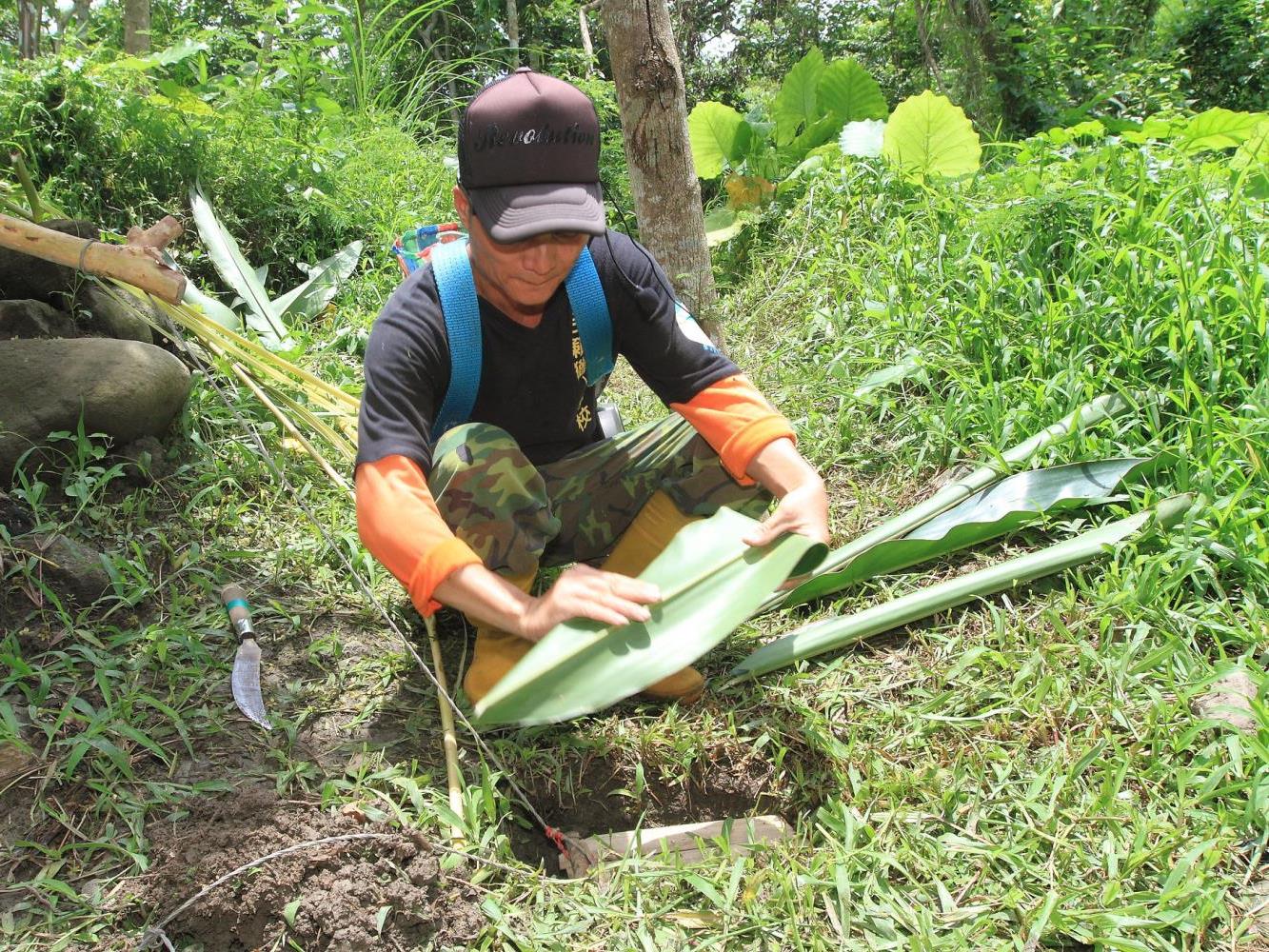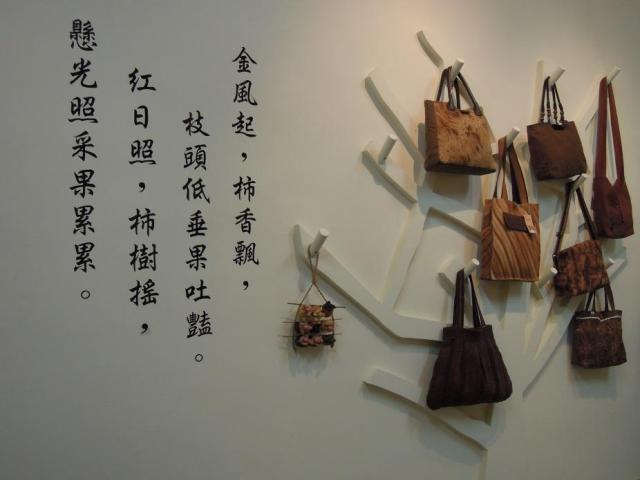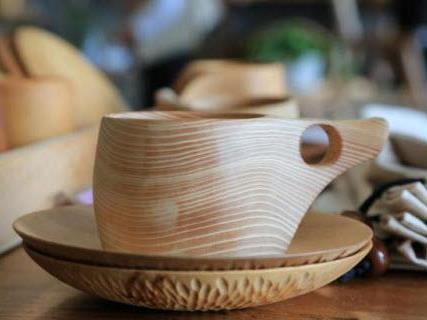GOAL 4: Quality Education
GOAL 4: Quality Education
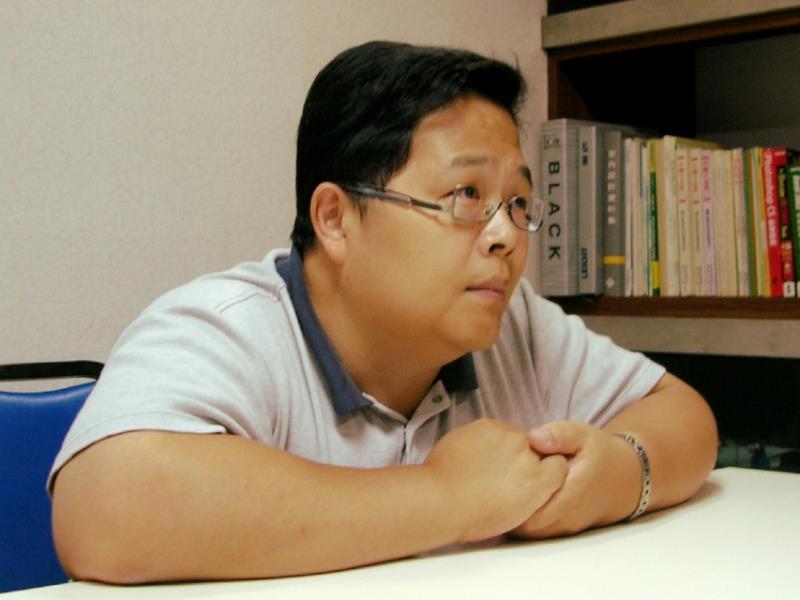
Home/Tag/GOAL 4: Quality Education
Victory Potential Development Centre Tears Down Employment Barriers
When those with a disability look for a job, the first question interviewers often ask is, "What can you do?" Roy (Ying Shu) Chang always asked in return, "What can we not do?" These are not words said in indignation but a genuine issue that perplexes him.
Roy was infected with polio in his childhood but never spent time in special education classes. He graduated from Fu Jen Catholic University with a degree in mathematics and then entered a securities company as the director of the computer department. Throughout his education, he did not spend much time with disabled persons and people around him did not treat him as one either. Not until Roy went to the Christian Victory Home in Pingtung and spent some time with children suffering from polio did he realize the stark difference between their fates and his.
In 1963, Norwegian physician couple, Dr. Bjorgaas and his wife stumbled upon a group of kids crawling in the dust in Pingtung. There was an epidemic of polio, and many children had been abandoned by their parents after contracting the disease because their parents were unable to look after them. The Bjorgaas then set up the country’s first children’s home, a home which specialized in taking in sick children that required rehabilitation after receiving surgery. Since then, the children finally had a warm house, close friends, and loving adults around them.
Though these children have had this stable home, they have also been imprisoned in it with no future prospects-especially because there were neither accessibility facilities nor sheltered workshops at that time. Victory Home was the whole world to these disabled children. Time would pass and seasons come and go, children eventually grow up, but after they turn 18 who would be there to take care of them?
By 1989, though Roy earned his status in the company as a supervisor, the thought of the children in Pingtung kept him uneasy whenever it came across his mind. After a lot of thought, he resigned from his job and went to the Pingtung Victory Home. Considering that he was able to live a normal life due to a complete formal education and vocational training, Roy thought that he should not keep this luck only to himself, so he went to Pingtung with the work experience that he had previously accumulated and taught the young people there the Cang Jie input method for typing. "At that time, if you knew how to type and could type at the speed of 50 words per minute, then you probably were able to have a very stable job," said Roy.
In order to stimulate their potential, Roy specifically took the students to participate in typing contests and achieved success with a number of people finding good jobs. Aside from typing, the Victory Home also set up computer animation, video editing and screen printing studios, and as a result the Pingtung Victory Home progressed from its three major original functions medical treatment, education, and care giving to the stage of employment.
Unfortunately, the sweet fruit of success did not last long under the challenges presented by the employment market. At the time, with advances in information technology, the software for office works, art, and imaging also changed in line with the rapid escalation in the development of computers. But the more they moved towards the high-end, the fewer customers they could find in the southern part of Taiwan, so after a period of time, the Victory Home was left with a group of people with high skills but no work to do. Roy had to admit his failure.
In 2000, Roy returned to Taipei with this painful experience. He reviewed the reasons for the success and failure of this experience and after rediscovering the latest market trends, he decided to fight in the name of Victory once again and established the “Victory Potential Development Centre.” But this time he focused his target customer group at the top of the market pyramid, specializing in the computer archiving business for the hand written forms of the banks and telecommunication companies.
He knew clearly that the higher-end the customers were, the lower their tolerance for errors would be. He also understood that the speed of the disabled persons might not be as fast as the others, but they could be much more careful and neat. So Roy carefully broke the work processes down and grouped three workers into a team to complete one case together. In particular, through long-term accumulation of the archiving repository, Victory gradually developed a precise debugging system. "It's like the social security number with its choreography as a set of invisible rules. If you accidentally entered the wrong number, then the computer would tell you that there was a problem. Another example was when you typed Taipei Nangang District, Chongqing South Road, the system would automatically detect whether the Nangang District had this road or not, and, if not, then the computer would not let you type anymore, suggesting instead that this road might be in the Zhongzheng District.”
With perfect co-operation between man and machine, the correct key-in rate reached 99.997 percent for the archives center. This not only received the information security certification of the British Standards Institution, but also became a fixed partner with the CTBC Bank, opening the gates to subsequent businesses.
This experience of climbing back up from the bottom made Roy realize that “If you want disabled persons to experience so-called ‘employment’, it is necessary to create an environment that was exactly the same with most people. Think about it, most people would not stress that they were weak and needed help when interviewing for a job, so we hoped our partners at Victory would keep the same level of work results as those of non-disabled people. Victory would not depend on fundraising to survive; we would create our own revenues.”
With this faith, Roy went into orchid tissue culture with his partners. At the time, Taiwan was not only well known as “The Kingdom of Orchids,” it was also a very important base for Orchid exports. However, the tissue culture process was quite complicated and highly repetitive, and it required a lot of care and patience for the job, making it suitable for the disabled persons. As a result, the orchid business immediately brought in considerable revenues for Victory. Unfortunately after a few years, the industry started to relocate, and this industry also came to a sudden halt.
Roy quickly realized that the business units must be more diversified to balance the risk, so he went on and developed a catering service business, again breaking-up the operating process so that people with different disabilities could fill in each other’s gaps and work together, all in order to overcome professional barriers. For example, the ordering service in the front of the house would be the responsibility of the physically disabled workers, while those who had impaired hearing would be responsible for delivery. On the other hand, in the kitchen, detailed processes of preparing meals had to be followed. For example, if a dish had ten ingredients, Victory would produce ten containers according to the weight of each condiment so that workers would just need to fill the containers, completely eliminating the process of measuring.
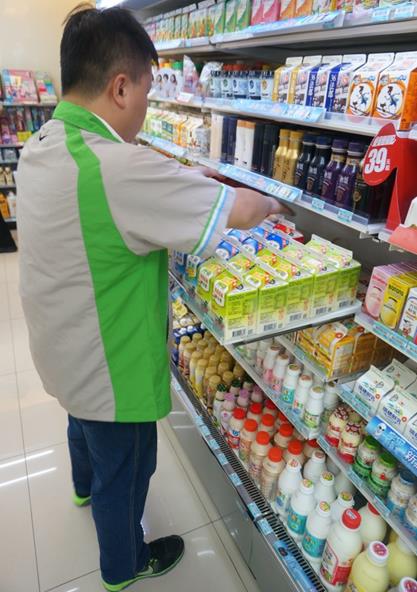
A Family Mart convenience store operated by a Victory partner had obtained a high score in the evaluation of all the stores nationwide.
Then Roy sought cooperation with the Family Mart convenience store while carefully designing a set of procedures. He pointed out "The original specifications for tea boiled egg preparation had just three lines: how many eggs to put in, how much tea to put in, and how much water to put in. But our disabled friends would not understand with just three lines of instructions, so we divided it into 10 steps, each step accompanied by pictures, captions and arrows. Even the instructions for ‘keeping the tip of the egg upward’ was clearly marked and explained.”
Although the process was quite complicated, Roy was confident. “Most people, no matter how careful they were, could not guarantee that there would be absolutely no interpretation errors, but with the design we made, the disabled persons did not need any interpretation and would not make any mistakes.”
But sometimes with disabled persons standing at the front line, you could not keep the guests from their suspicions towards them. For example, once there was a truck driver who entered the Victory gas station and specified that he wanted his vehicle refuel with unleaded gasoline. Although the staff repeatedly reminded him that he should use diesel for his truck, he still insisted. To their disbelief, the driver came back and accused the staff of not using the correct fuel, which left the staff speechless.
With this experience, Roy later came up with a double insurance refueling process: after the customers noted the type of fuel they needed, in addition to the station staff saying it again, they also had to come up with a big piece of paper with the fuel typewritten down and put on the front windshield for the driver to confirm, this to protect the station staff from any wrong accusations.
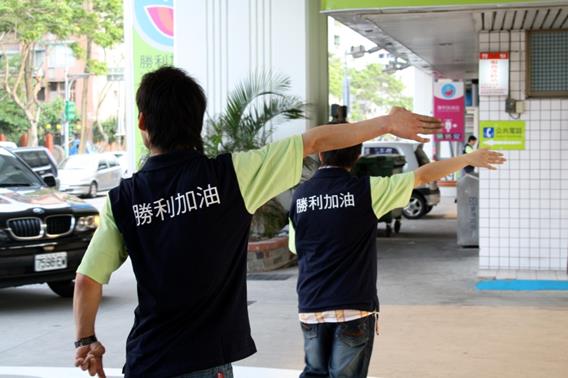
Through appropriate procedure allocation and segmentation, Victory employees can perform as well as average persons.
With the improving sophistication in the work of Victory partners, Roy further opened the "Tranbo Art" glass studio, where each of the glistening glass works including plates, picture frames, paperweight, rings, and necklaces were all handmade by disabled persons. Similarly, the production process of cutting, drawing, gluing, grinding, polishing, and kiln heating were also segmented into 10 or more steps that were suitable for the physically disabled, mentally challenged, deaf, autistic, and other different kinds of disabilities. Although when compared to the machine made products there were greater differences between the products that could not be exactly duplicated, the delicate detail work and the warmth of the handmade texture was something the machine could not achieve.
More importantly, these craftsmen never relied on the title of "disabled person" for marketing. For example, the yolk of the "Poached Egg Glass Plate" was in a perfectly half-cooked, semi-liquid/semi-solid state, and mouthwatering good. So it not only became the exclusive souvenir for the convenience store, but all other products also received the “Fashion Award” from the Taiwan Craft Research and Development Center, and one by one went to Tokyo, Beijing and Shanghai for exhibition. It won first place in the Taiwan Craft Competition in 2016 and was put in the National Palace Museum’s collection.
Besides being successful in the market, Roy did not give up on those who were severely disabled and were unable to step out of their doors. He established a visual design center to develop their skills in the design of websites, animation, posters, advertising catalogs, books, and magazines. Under this operating mode, the employer did not have to meet the designer in person and the designers did not need to go out to have a great time working together.
Roy then said, "Everything was output and outcome-oriented. I would not let business owners think of who was working for them, what they paid for is the work from start to finish, so we were really able face challenges given by the market.” Victory also did not emphasize the traits of disabled persons operating the convenience stores. “When I negotiated with the head office of Family Mart, it was opening a store, not making a donation. So the franchise fee, deposit, and renovation costs would be the same as the standard, not a penny less, and the performance indicators were also in accordance with the general franchise standards.”
Fortunately, the first-line service personnel never disappointed. The head office of Family Mart conducted annual evaluations for all of the stores nationwide every year, and the Victory store was ranked first in performance growth among over 400 stores in the southern area of Taipei. Soon after it made its way into the top 15 among the 3000 stores all over the nation and was representing Family Mart in competing with over 10,000 different brands of convenience stores. At that time, the evaluation committee told Roy, "Honestly, I really cannot tell who the instructor is and who the disabled person is." Roy was really moved and responded, "This is the best compliment for us!"
After 17 years, Victory has developed 12 different business units, providing more than 200 job opportunities. But this has never been Roy's wish. What he wanted was for all the partners to return to the community to live and grow in the future. Only this could represent for them living the ordinary life of average people.
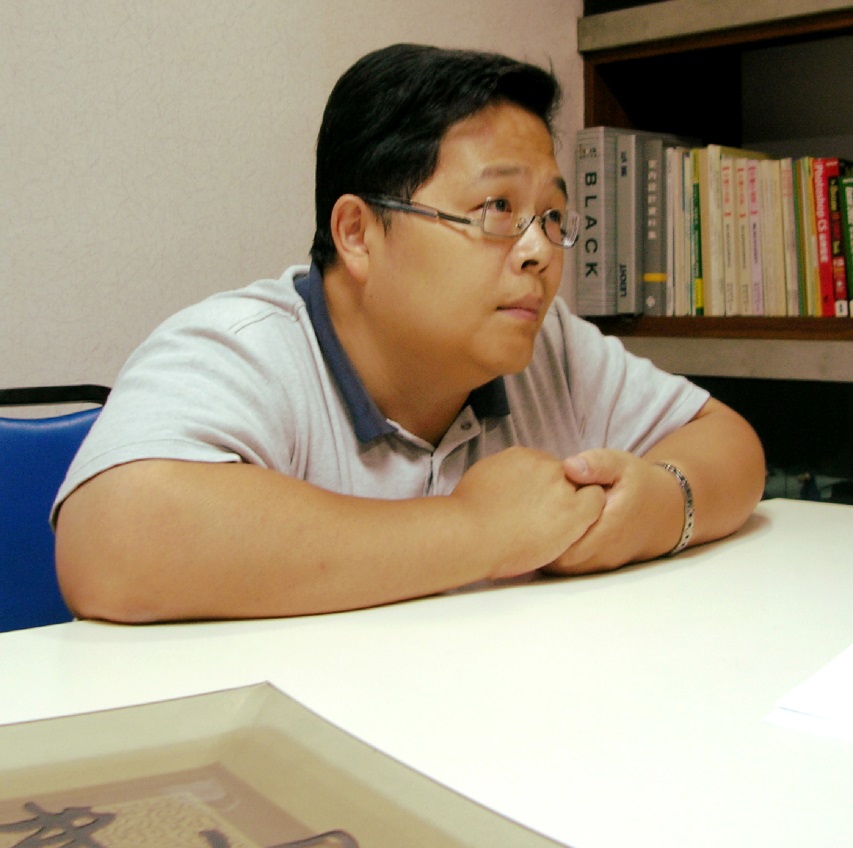
"What can we not do?" is Roy's standard response to those who question the working ability of the disabled persons.

This work is licensed under a Creative Commons Attribution-NoDerivatives 4.0 International License.
Please attribute this article to “Workforce Development Agency, Ministry Of Labor”.


